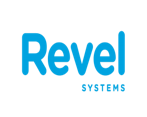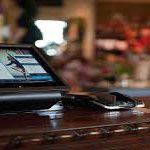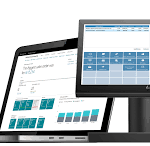5 Must-Have Retail POS Software Features to Streamline Your Small Business
Retail store owners operate on tight margins and manage many moving parts. Because of this using manual methods to track all these processes and records becomes increasingly difficult over time.
Because of the tedious and time-consuming nature of tasks such as inventory management and sales reporting, small retailers are missing out on other opportunities to grow their business.
A point-of-sale (POS) system is a great tool to manage all these moving parts while helping to ensure customer satisfaction—but finding the right POS for a small or midsize business (SMB) is no easy feat.
You’re not alone in feeling this way.
Of the thousands of small merchants we spoke to this year, 56 percent of single-store retailers still don’t have a POS system in place, suggesting that SMBs still have some way to go in overcoming their fears of adopting new technology.

By implementing these must-have features, small retailers can eliminate the most manual and tedious steps from their processes, resulting in more time and resources to focus on growing key parts of their business such as improving customer service experience or attracting new customers.
In this article, we’ll share advice from retail store owners who are using POS software successfully, as well as useful insights from Steve Lankler, senior vice president at Direct Capital, a small business financier of POS systems, about the importance of these features.
Sales Reporting & Analytics: Transparency Into Data
What is sales reporting & analytics: Sales reporting and analytics allow you to capture and analyze your store’s sales data. It gives you a real-time snapshot of the performance of your store through reports and metrics.
Why you need it: Relying on concrete data rather than guesswork enables you to make more informed decisions to potentially increase sales and profitability.
Sales reporting and analytics does just that by providing visibility into your entire operation. Not only does it automatically keep track of products that are selling well, but also shows how much revenue you’re making on each product.
In addition, having real-time transparency about sales information ensures you’re never out of what drives revenue. This allows you to identify and focus on driving sales to your top money-making items.
Our research shows that your peers are clearly recognizing the importance of the feature. Among the single-store POS buyers who contacted Software Advice for help, 48 percent requested for sales reporting and analytics capabilities in a POS system.

How it works: Imagine you’re selling a lot of T-shirts very quickly. The last thing you want is to be manually updating your inventory while busily selling. With real-time sales reporting, you’ll receive alerts when your stock levels sink below a threshold number. This way you’ll never be without a popular item to sell.
Since adopting a POS system with sales reporting and analytics, Rios has been able to increase the efficiency of her store by automating previously manual and labor-intensive tasks such as counting inventory:
“With one click of a button, I can see what our sales were for that day, what our returns were and how we’re doing on inventory. The old way, without having [a POS], I’d have to look through all the data on the books and add it up manually.”
Example: Sales Reporting and Analytics in Action
Lightspeed allows you to filter sales totals, and is accessible from mobile devices so you can view your store’s performance from anywhere.
Customer Management: Attract Valuable Customers
What is customer management: Customer management applications collect data on your customers’ purchase histories, allowing you to identify your most valuable shoppers based on their spend, while tracking the entire retailer-customer relationship.
Why you need it: Customer management applications help businesses track customer activity with their brand in the interest of creating deeper, more emotional relationships with repeat buyers. A good retail customer management system can help drive loyalty and create ambassadors for your brand.
These POS payment systems also provide valuable intelligence around buyer behavior that can create an effective customer loyalty program, says Direct Capital’s Lankler:
“It allows merchants to get more control around buyer data. You can then start to layer on this new opportunity to understand who your customers are and build loyalty programs around them.”
How it works: Being able to put a face to your buyer data through customer profiles is especially beneficial, says Lankler, as it enables you to easily store and manage customer purchase histories, contact information and even loyalty points.
This is exactly how Amber Hayes, owner of Louisiana-based clothing store Kennedy’s Chic Closet, hopes to retain repeat customers through her software.
“I’m planning on starting a loyalty program where if customers spend a certain amount of money, they get rewarded with discounts,” she says.
As Lankler and Hayes point out, the insights provided through customer management can help pinpoint your most loyal customers. You can then target these valuable customers with rewards, promotions and discounts to keep them coming back for more.
Example: Customer Management in Action
Revel offers customer profiles, purchase history and points tracking, which offer key insights into your customer purchasing habits.
Inventory Management: Eliminate Manual Inventory
What is inventory management: Inventory management helps you keep track of the complete catalog of your products, whether on display or in the storeroom.
Why you need it: Managing the quantity of on-site inventory plays a vital role in the success of your store. Inventory management capabilities give you an on-demand window into your stock. This enables you to eliminate inefficiencies, such as manually counting inventory and digging through “the back” for a specific item.
Our buyer data shows inventory management is a must-have for retailers, as 84 percent of POS buyers we consulted request it.

This makes it easy to monitor and resupply your top-selling items, as well as to mark down low-selling products to phase them out.
Since implementing inventory management, Shift has been able to monitor its stock across all channels – stores, warehouse and online—and initiate transfers between stores, where necessary, to ensure that inventory is balanced across all locations.
The team was also able to keep an eye on low performing items, and work with vendors to arrange returns or exchanges to ensure a constantly moving inventory.
As demonstrated by Shift, having a good inventory management can go a long way in managing your supply chain, thereby impacting growth and profitability.
Example: Inventory Management in Action

Vend allows you to view detailed information for each item in stock, including price, quantity and supplier codes.
Point of Sale: Knowledge from Sales Reports
What is POS: This is, as the name suggests, the point where sales are made. It is the place where your customer executes the payment for goods or services bought from your company.
Most modern POS systems today go beyond just accepting and tracking sales. They also come with additional reporting features, such as which products are the best-selling or who your highest-performing sales advisors are.
Why you need it: A POS system can save you time by simplifying crucial business operations, which in turn reduces the potential for human error by automating tedious checkout processes, such as price calculation and item look-up. There’s also no need to dig through receipts as you can look up any transaction as needed.
As customer experience continues to be a defining battleground for retailers, mobile POS devices are also increasingly gaining traction as small businesses seek to meet the demands of their consumers.
Our research found that nearly 20 percent of newly set up small retail businesses requested for tablet-based POS systems. Some key benefits of mobile POS include:
- Flexibility with payment types: Mobile POS systems can accept payments in the form of all swiped credit and debit cards, even contactless technologies like near field communication (NFC) and Apple Pay.
- Enhance the customer experience: No longer are you chained to the cash register. With the ability to accept customer payments anywhere as well as having direct access to information about items, your employees can speed up transaction times, leading to shorter wait times for customers and an overall higher positive experience.
- Ease of set up and use: Gone are the days when employees have to be trained for several hours on POS systems. Mobile POS these days are often easy to set up and implement with minimal assistance.
Want to find out if mobile POS is the right solution for you? Our article “Three Emerging Retail POS Technologies That Will Benefit Retailers” further explains how mobile POS systems can increase the efficiency of your small business.
How it works: Imagine this—you’re a small business owner launching your first coffee shop next week. You’ve heavily promoted the day and are all geared up for a coffee-thirsty crowd. How do you imagine your grand opening unfolding?
Will your staff be taking orders with a traditional electronic cash register as a line of impatient customers stretches out the door? Hopefully not.
Having a modern POS system could be an enormous time-saver to help you run your cafe more efficiently by processing sales, tracking inventory, running sales reports and more.
This is a laborious yet crucial process that takes them out of the store for the majority of the time they are open. Because of this, their store manager Risa needs to ensure that new employees are trained properly and operations are running smoothly at all times.
Since switching from an old cash register to a modern POS system, Risa says training has “become less of a challenge.”
Of the new POS system, she says: “The design is so simple and the search functionality makes it fast and simple for new employees to find the proper product they are looking for.”
As a result of being freed from the responsibilities of day-to-day in-store management, Judy and Tom are able to focus on continuously identifying great products and growing their customer base.
Example: Point-of-Sale Functionality in Action

Cashier Live offers functionality to simplify your transaction process, including barcode scanning, inventory look-up, credit card processing and receipt printing.
E-commerce: Expand Your Customer Base
What is e-commerce: E-commerce refers to any business transaction done online. If you’ve shopped online, you’ve interacted with e-commerce software.
Why you need it: E-commerce has become a ubiquitous part of the shopping journey, meaning that having an online store is no longer a “nice-to-have” for retailers–it’s a must-have to stay competitive and achieve business success.
A forecast by eMarketer projects that e-commerce sales will soar to $2.5 trillion by 2018. Given the rapid growth of digital commerce, it is now critical for retailers to merge their brick-and-mortar stores with e-commerce to provide a well-rounded and seamless experience.
According to Laith Murad, CMO at Lightspeed, e-commerce sites and physical retail stores work best when paired with each other.
Having an e-commerce space extends your reach to potential buyers and provides a more granular view of who your customers are.
How it works: Customers often use digital stores to research products they have in mind before stepping into your brick and mortar store to feel and test them out.
As they research, you can see what they’re looking for, how they’re responding to your products, as well as shopping trends you may have missed in-store. That insight can help you decide what to stock at your brick-and-mortar store.
Based in Lakefield, Canada, Stony Lake Furniture offers a wide array of furniture, ranging from sofas and tables to textiles and table lamps that are locally handcrafted.
“I’ve had people call me and say, ‘I saw this product on the website. I’m not ordering it right now, but I’d like to learn more,’” says Besseling.
That, in turn, creates an opportunity for her to start a conversation and create a rapport with potential customers–some of which end up visiting by her physical store. “Whether or not the sale happens online, it still helps generate sales overall,” she adds.
Example: E-commerce in Action

What’s Your Next Step?
We know selecting a POS system can be an overwhelming process. That’s why our team of software advisors provide free phone consultations at (844) 687-6771 to help you build a shortlist of POS systems that are a good fit for your business. Let them help you choose a system with these five must-have tools to simplify and streamline your store operations—and help your business grow.
Other options for getting a POS system and gaining an edge include:
- Visiting POS or e-commerce buyer’s guide for detailed information regarding more specific features and capabilities.
- Explore user reviews for retail and e-commerce software. Your peers have left you a great resource, so take advantage of their experiences and thoughts on specific retail software.







 Previous Post
Previous Post Next Post
Next Post